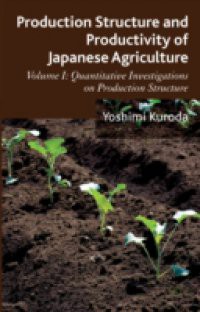By departing from conventionally analytical tools such as Cobb-Douglas and CES production functions, the author quantitatively analyses the production structure and productivity of Japanese agriculture for the second half of the 20th century. To achieve this objective the book uses newly developed analytical tools from the early-1950s through to the 1980s such as the duality theorem, flexible functional forms, and index number theories. By making full use of these newly developed analytical tools, the author offers comprehensive, consistent, integrated, and reliable empirical results for analysing the production structure and productivity of postwar Japanese agriculture.Volume 1 utilises the crop-livestock multiple product total and variable translog cost to quantitatively assess production structure and productivity from 1957-1997. Important indicators of production are estimated for different size classes for eachyear and are compared over time. Furthermore, a distinctive feature of Volume 1 is the introduction of a newly devised method for decomposing the growth rate of labor productivity. This process departs from the conventional Solow growth account method, which is not explicitly integrated with the theory of the firm.




 10 (1)
10 (1) 












